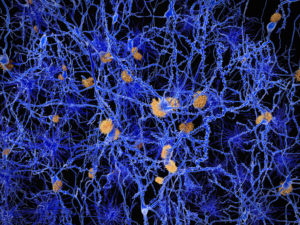Imagine driving in your car and suddenly not recognizing where you were going and having no idea how to find your way home. What if you looked across the breakfast table at your spouse and no longer recognized them? Or maybe you have to brace yourself every time you visit your parent, waiting for the day when they won’t know who you are. This is the reality for the estimated 50 million (worldwide) Alzheimer’s disease sufferers and their families.
In a world with an aging population, Alzheimer’s is a growing problem. Recent estimates suggest that 11% of people over the age of 65 have Alzheimer’s disease. For people 85 and older, that number increases to 32% (1).
Alzheimer’s disease is a devastating degenerative brain disease. It is the most common cause of dementia and is characterized by a decline in cognitive skills such as memory, language skills, communication and problem-solving abilities. These symptoms make it difficult for people with Alzheimer’s to perform everyday activities. It also is difficult to diagnose, even more, difficult to treat, and, as of now, impossible to cure.
Continue reading “Restoring Memory in Alzheimer’s Mice with Microbubbles and Ultrasound”
 Forgetting. Forgetting your address; your spouse; your children; your friends; your life. It is something that none of us want to think about, but it hangs over some of us like a specter. Can’t remember if you fed the cat? Where you put your car keys? Did you forget to pack your lunch or return a phone call? Maybe you are trying to do too many things at once, or maybe you are tired. There are lots of perfectly normal reasons why we all forget things from time to time, but every time I forget something there is a nagging voice in my head saying, “Maybe it is something else.”
Forgetting. Forgetting your address; your spouse; your children; your friends; your life. It is something that none of us want to think about, but it hangs over some of us like a specter. Can’t remember if you fed the cat? Where you put your car keys? Did you forget to pack your lunch or return a phone call? Maybe you are trying to do too many things at once, or maybe you are tired. There are lots of perfectly normal reasons why we all forget things from time to time, but every time I forget something there is a nagging voice in my head saying, “Maybe it is something else.” 